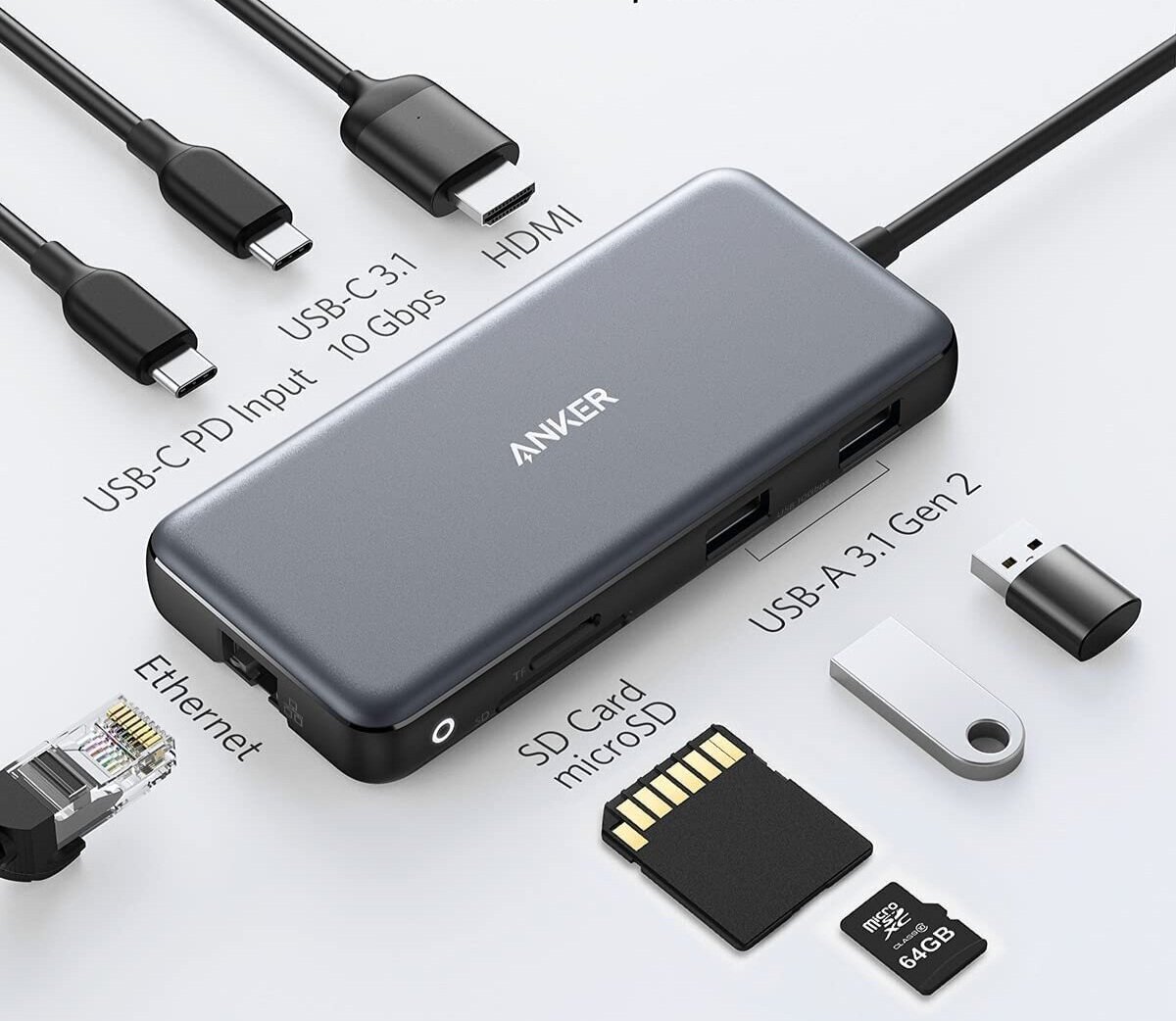Anker 8-in-1 USB-C Hub
Although I try to not be a fanboy of any particular brand, some companies just seem to deliver what you need again and again in a design that you find appealing.
All links in the following section are Amazon affiliate links to the respective products.
That’s true for Anker. I’ve found myself buying cables, docks, power banks, portable speakers and hubs from Anker recently and have generally been happy with all of them.
Today I’m looking at the Anker 8-in-1 USB-C 10gbps Power Delivery Hub.
Support the Channel
If you’re interested in the Anker 8-in-1 Hub or feel like buying anything else on Amazon, please use the link below so Amazon know I showed you to their door.
What’s in the Video
In the video, I’m looking around the product and describing its features as well as running a few speed tests and giving you my overall thoughts on the product.
Dock or Hub - What’s the Difference?
Although there seems to be some cross-over between the two, there are some key differences between the two that usually hold true.
A hub is designed for portability and ease of use whereas a dock is designed to facilitate a static desktop setup where the dock itself will probably be permanently connected to many devices and you just unplug the single cable to the laptop.
A hub will usually have less I/O than a hub.
A hub is usually not powered. It may well allow power to be passed back through to a laptop but most or all of the functionality of the hub will be possible without any kind of external power supply.
A hub tends to be a variant of USB. There are not many hubs that support Thunderbolt. I’m not sure if this is a technical, cost or licence issue.
A hub will generally not currently support a resolution higher than 4K 60Hz (unlike Thunderbolt which will support 5K 60Hz with its 40gbps link).
A hub is usually considerably cheaper (between £20 and £80) and, as a result, not as well constructed.
The Good
A nice range of connectivity with both USB-A ports, USB-C ports, SD, Micro-SD, Ethernet and HDMI.
Couldn’t be simpler to connect and use. No drivers required and no external power needed.
4K 60Hz support (I’ve tested this and it works)
Nice clear, clean and simple design.
Power light to confirm the connection.
Supports 10gbps USB 3.1 Gen 2 speeds (in theory)
Uses a fly-lead reducing stress on precious laptop ports.
The Bad
Didn’t achieve anything close to 10gbps on my setup. An external NVMe drive connected to my Anker 13-in-1 powered dock manages speeds of 1050MB/sec. The same drive running through the hub only manages about 500-600MB/sec and appears to be hard limited to 5gbps rather than 10gbps. I discuss this further in the video.
I was hoping it would have an aluminium casing but it’s 100% plastic.
No Thunderbolt support. Remember, this is just 10gbps USB-C.
I wish the power light flashed for data transfer and changed colour for modes (e.g. white for 5gbps and blue for 10gbps).
No dual display options (or Displayport) although Anker does another variant with that in mind.
Expensive. You can pick up something like this for half the price if you’re not so bothered by design, build quality or brand or if you don’t need the 10gbps USB 3.1 Gen 2 support. I’m sure the internal chipsets used are similar or identical.
Conclusion
Would I recommend this? Definitely. Now that the global pandemic isn’t keeping us locked in our homes so much, I have already found this hub becoming more and more essential. It does everything I need and, whilst it isn’t as fast as the Thunderbolt 3 dock, it’s perfectly fast enough when on the go.
Thanks for stopping by and please do use the affiliate link below if you’re interested in this hub to help support the site and channel.


